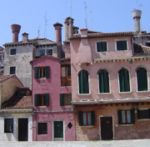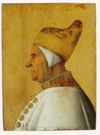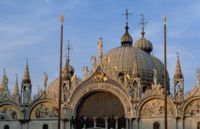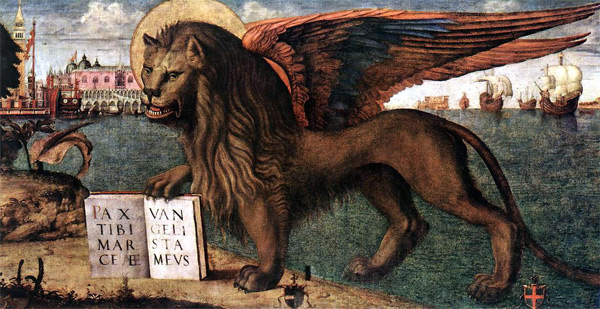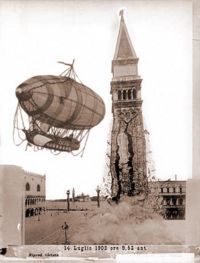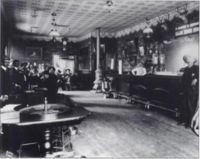ATD 243-272
- Please keep these annotations SPOILER-FREE by not revealing information from later pages in the novel.
Contents
- 1 Page 243
- 2 Page 244
- 3 Page 245
- 4 Page 246
- 5 Page 247
- 6 Page 248
- 7 Page 249
- 8 Page 250
- 9 Page 251
- 10 Page 252
- 11 Page 253
- 12 Page 254
- 13 Page 255
- 14 Page 256
- 15 Page 257
- 16 Page 258
- 17 Page 259
- 18 Page 260
- 19 Page 261
- 20 Page 262
- 21 Page 263
- 22 Page 264
- 23 Page 265
- 24 Page 266
- 25 Page 267
- 26 Page 268
- 27 Page 269
- 28 Page 270
- 29 Page 271
- 30 Page 272
- 31 Annotation Index
Page 243
The Chums return
When were the Chums last seen in AtD? As far back as page 142?
A brief reminder of who the Chums are and what we know about them so far:
- Randolph St. Cosmo, commander.
- Lindsay Noseworth, Master-at-Arms and second in command, hates slackers and slang.
- Miles Blundell, handyman, awkward, with an "ample waist" (11), also ship's Commissary, whose cooking ranges from pure cordon bleu to inedible. (110)
- Darby Suckling, the baby of the crew, served "as both factotum and mascotte". By page 141 or so, has transformed from spirited youth to bomb obsessed, (111) sneering, snide cynic. Because of hitting adolescence?
- Chick Counterfly, the newest member of the crew, picked up by the Chums in the South while on the run from the KKK. At last appearance, had become Dr. Counterfly, knowledgeable Science Officer aboard the Inconvenience (141). Reliably humorous. (110). Chick's style of speech here seems intermediate between the country boy of the early chapters and the sophisticated Dr Counterfly who met the Vormance expedition. Are we also at an intermediate point on the timeline?
fumaioli
Italian: funnels; fumaioli are large wide-topped chimneys, common to the rooftops of Venice.
certo
sure, certain.
Gli Amici dell'Azzardo
Italian for The Chums (lit. Friends) of Chance.
Seccatura
Italian: Inconvenience
Page 244
ragazza
Italian: girl.
Picardy thirds
The use of a major chord at the end of a musical section in a minor key. Miles seems just as moved by them as Lew. Cf p50
The gondolier is singing harmony with himself, or else Miles is imagining the accompaniment.
Picardie is also a region in northern France and "during the Middle Ages... included the Dutch speaking Flanders." [1] The region was a hotbed of action along the Western Front in WWI and played host to the Battle of the Somme, which totaled more than a million casualties and was "one of the bloodiest battles in human history."[2]
stabilimento
Italian: establishment.
Page 245
Garibaldi
Famous Italian leader, major figure in the Italian Unification. Wikipedia
"Ehi, sugo!"
"Hey, sauce!" Does this make sense to anyone?
It does not make any sense in Italian.
To a good approximation, this is what the Fonz used to say in the TV series Happy Days. People mostly understood his melodic "Aaayy" as a variant of "Hey," but maybe instead it was something his Uncle Pio brought from the old country.
twentyfold
5 chums times 4 suspects each. (Randolph suspects Lindsay, Miles, Darby and Chick of being the leak; and so on around the crew. And that assumes no one suspects Pugnax!)
osteria
tavern.
San Polo
The smallest district/area in Venice, and among the oldest. Wikipedia
rio
narrow waterway in Venice.
against the night
OK...
calli
Venetian 'street' or 'lane'.
Page 246
sotoporteghi
passageways. See picture for one example [3].
"Sa stai, O! Lungo, ehi!"
It does not mean anything in Italian or in the Venetian dialect. One possibility is mimicking the callouts of gondoliers. Lungo could be someone's nickname.
Other possibility is a wrong lettering of: Xa star, oh! Lungo, ehi!, meaning Ehi, Lungo, let it be and let's go! or something similar.
cameriere
Italian: waitresses (plural of cameriera).
pallonisti
(fake-)Italian: balloonists.
Ehi, macché, Pina!
Italian: Ehi, Giusep(Pina), what are you telling me?
giadrul
Again, doesn't mean anything in Italian or Venetian dialect. Seems to be a term of insult, variously described as American-Italian only (see previous link) and southern Italian (see next). One source gives one meaning as "zuccone" - this appears to mean "pumpkinhead". I guess we're looking for something phallic, given the context.
(as far as I can see, it is an American-Italian deformation of the correct italian word "citrullo", which in fact is some sort of "dumb ass", and is derived from neapolitan for "cetriolo", that is, "cucumber" )
"with all the spaghetti-joints in this town to choose from, are you saying those dadblame Russians have come in here?"
reminiscent of a similar line from the film Casablanca, spoken by Humphrey Bogart: "Of all the gin joints in all the towns in all the world, she walks into mine."
Page 247
tacchino in pomegranate sauce
turkey in pomegranate sauce and, presumably, the "Purple Thanksgiving" to which Miles refers above.
Dum vivimus, bibamus
While we live, let us drink. Paraphrase of "Dum vivimus, vivamus".
vini frizzanti
sparkling wine (plural).
SANGUIS RUBER, MENS PURA
Latin: Red blood, clean mind.
Serrata del Maggior Consiglio
Great Council Lockout, 1297. Link to the "Maggior Consiglio" entry on Reference.com [4]
Napoleon's abolition
1797. Wikipedia
Polos' return
Marco Polo together with his father and uncle returned to Venice in 1295 from their travel to China started in 1271.
Marco Polo (1254-1324), a Venetian traveller. Was born of a nobel family at Venice, while his father and uncle had gone on a mercantile expedition by Constantinople and the Crimea to Bokhara and to Cathy (China). The Mongol prince commissioned them as envoys to the Pope, a commission they tried in vain to carry out in Italy (1269). The Polos started again a new trip to China in 1271, taking with them young Marco, and arrived at the court of Kublai Khan in 1275 by way of Kashgar, Yarkand, and Khotan to Lop Nor, then across the Gobi desert to Kansu and Shang-tu. Marco Polo entered the diplomatic service of Kublai Khan and was sent on missions to various parts of the Mongol empire. The Polos left China on 1282 and returned by way of Sumatra, India, and Persia to Venice (1295). In 1298 Marco was in command of a galley at the battle of Curzola, where the Venetians were defeated by the Genoese, and he was a prisoner for a year at Genoa. Here it was thought that he dictated to another captive an account of his travels, published under the title of Divisamemt dou monde. (English title: The Travels of Marco Polo.) (Marco Polo.)
Kublai Khan (1214-94), Mongol khan, emperor of China, grandson of Jenghiz Khan. He completed the conquest of northern China and became the first foreigner ever to rule China. An enegetic prince, he suppressed his rivals, adopted the Chinese mode of civilisation, encouraged men of letters and made Buddhism the state religion. But his attempt to invade Japan ended in disaster. His dominions extended from Arctic Ocean to the Strait of Malacca, and from Korea to Asia Minor and the confines of Hungary. The splendor of his court inspired the graphic pages of Marco Polo. (from Chambers Biographical Dictionary, 1984 edition.)
Jack Weatherford, in Genghis Khan and the Making of the Modern World (2004), calls him Khubilai Khan and makes rather different statements about the extent of his realm and his treatment of religion.
Samuel Taylor Coleridge's 1816 poem "Kubla Khan" uses yet another spelling. Weatherford identifies "Xanadu" as Shengdu.
Page 248
Doge's hatFor some thousand years, the chief magistrate and leader of the Most Serene Republic of Venice was styled the Doge, a rare but not unique Italian title derived from the Latin Dux, as the major Italian parallel Duce and the English Duke. Doges of Venice were elected for life by the city-state's aristocracy. Wikipedia entry
Attenzione al culo
Italian: watch your ass.
Shambhala
In Tibetan Buddhist tradition, Shambhala is a mystical kingdom hidden somewhere beyond the snowpeaks of the Himalayas. Shambhala is believed to be a society where all the inhabitants are enlightened. During the 19th century, Theosophical Society founder H.P. Blavatsky alluded to the Shambhala myth, giving it currency for Western occult enthusiasts. Later esoteric writers further emphasized and elaborated on the concept of a hidden land inhabited by a hidden mystic brotherhood whose members labor for the good of humanity. Wikipedia entry
cicerone
A guide who shows and explains the antiquities or curiosities of a place to strangers. [1]
Professor Svegli of the University of Pisa
The fictional professor's name comes from the Italian sveglio for "clever, dextrous, skillful."
"try to forget the usual picture in two dimensions"
Cf. page 220, the idea behind the Tetractys as explained by Nigel and Neville.
an episode of intentional blindness
Echoes the "denial of ordinary vision" that Lew sees when he meets Professor Renfrew (p. 240). Might these "blind spots" in sense evoke Iceland Spar?
Page 249
"there are two distinct versions of 'Asia' out there, one an object of political struggle among the Powers of the Earth -- the other a timeless faith by whose terms all such earthly struggle is illusion."
Perhaps a reference to Orientalism, or Western (mis)representations of indigenous cultures, which functioned as the knowledge apparatus of the colonial project. The eponymous text, a seminal one in literary theory, was written in 1978 by Edward Said.
"Those whose enduring object is power in this world are only too happy to use without remorse the others, whose aim is of course to transcend all question of power. Each regards the other as a pack of deluded fools."
Over time, Pynchon appears to have come to a belief in a massive conflict between cultures "valuing analysis and differentiation" and those valuing "unity and integration". The two alternate maps of Asia could be a reference to these disparate worldviews.Wikipedia entry on V.
The problem lies with the projection
(a) Projection by each group of its own obsession onto the other group. (b) Cartographic projection, i.e., how the round world gets imaged onto a flat sheet of paper.
Imaginary surface
Presumably meant to mean (or at least allude to) imaginary in the mathematical sense: involving the square root of -1.
paramorphoscope
AtD is itself a paramorphoscope; satire and science fiction typically hold up a distorting mirror to the world in which they are written, and present worlds "set to the side of the one we have taken". In the end the correct paramorphic "mirror" shows the world clearly.
"a certain percentage of them went mad and ended up in the asylum on San Servolo"
Cf. the Northern Ohio Insane Asylum with its light-obsessed inmates at page 59.
the asylum on San Servolo
First established as a military hospital in 1715, later became a mental asylum. Seems that San Servolo is to Venice what Bedlam is to London. Wikipedia
Clifford's term
W.K. Clifford, (1845-1879): an English mathematician. Wikipedia
Page 250
Dr. Cantor
Georg Cantor (1845 - 1918), German mathematician who elucidated the theory of the cardinality of a set. He discovered that some infinite sets are in a fundamental way larger than other infinite sets, for example the natural numbers and fractions have the same cardinality, but the cardinality of all real numbers is strictly greater than the cardinality of the natural numbers. Cantor's Theorem is what is most relevant to his mention here.
the plano-convex designs of Griendl von Ach
For a brief history of the compound-lens microscope, and the roles played by the Italians and the Dutch, including Griendl von Ach, see:
http://www.1911encyclopedia.org/Microscope
Istrian stone
Building stones quarried in Istria and common in the architecture of Venice. See: Wikipedia Entry
prophetic vision of St. Mark
Mark the Evangelist (1st century) is traditionally believed to be the author of the Gospel of Mark and a companion of Peter. From this site: "...a prophetic dream that Mark was said to have experienced during his earlier, supposed ministry in the area of the Venetian lagoon. In it he was visited by an angel who told him that he would find his final resting place on the very site where San Marco would later be built." In the first century there was no settlement worth mentioning in the Lagoon yet. The prophecy was "fulfilled" in 828 when the saint's remains stolen on orders of Doge Giustiniano Participazio in Alexandria were brought to Venice. Wikipedia entry St. Mark is represented by a winged lion and is the patron saint of Venice [5].
but in reverse
Miles now takes the place of the angel. Who or what is the "Being" and what form does the prophecy take?
cormorant
A large and voracious sea-bird, about three feet in length, and of a lustrous black color. [2]
scirocco
An oppressively hot and blighting wind, blowing from the north coast of Africa over the Mediterranean and affecting part of southern Europe. [3]
lateener A ship with a "lateen" style sale. See: Wikipedia Entry
neither sails, masts, nor oars
Not a craft that is driven by the wind or human muscle. To say more could spoil a plot point.
Page 251
"the Book, the page it was open to?"
"Pax tibi Marce, evangelista meus." (May Peace be with you, Mark, my evangelist.)
Lion of St. Mark by Carpaccion
Vittore Carpaccio (c.1460–1525/6) was a Venetian painter. Wikipedia entry
Porta della Carta
The Doge's Palace. Wikipedia Entry
the vision of St. Mark, but in reverse
In St. Mark's vision, an angel appeared to Mark and informed him that his remains would one day end up in his present location, which later became Venice. Here, Miles seems to assume the form of the angel (in the form of a lion?) and the 'promise' Pynchon mentions seems to be the angel's promise to Mark.
our own duty, our own fate... the real journey
Pynchon's one-paragraph summation of human life and its meaning recalls a letter Pynchon wrote in the early 1960s, The World is at Fault, in which he also summed up the entirety of human life in a few tidy sentences. Both employ the word 'pilgrimage.'
Page 252
sotopòrteghi
Tunnels or passageways under large buildings.
tenebrous
Means "shadowy" but is also a link back to the previous paragraph. The Tenebrae Service is a special form that is meant to recreate the feelings of the Passion story, also represented by the Stations of the Cross.
Renata
Note that Renata is the name of the female protagonist in Ernest Hemingway's Across the River and into the Trees, set in Venice.
Glagolitic
The Glagolitic Alphabet is the oldest known Slavic alphabet (9th c.). It originated as a tactic to lessen the dependence of the subjects of the Prince of Greater Moravia on Frankish priests, who banned it but could not suppress it; it played a similar role in preserving Bulgarian independence from Byzantium. [6] It appears to be a nexus of the kind of simultaneous temporal and spiritual tasks the Chums of Chance are now involved in. In this, it raises the issues first explored by Pynchon in the "Tchitcherine in Kyrghizia" sections of Gravity's Rainbow in which the introduction of a written alphabet causes immense political and social change.
Gauloise
famous French cigarette. See Wikipedia.
scusi
Italian: Excuse me.
Affascinante, caro
Italian: Fascinating, dear (addressed to a male person).
ragazzo
Italian: Boy.
Mattoidi
Italian: Semi-insane persons. The word was coined by Cesare Lombroso, the physiognomist.
Prego
Italian: Please.
Page 253
Pozzuoli
A city in the Province of Naples (Napoli) in the region of Campania. See Wikipedia.
The Tarocchi are much, much older.
Not at all! This is one of those ideas that rarely gets questioned, especially since some "interpreters" of the tarot claim ancient Egyptian origins. The actually only date back to the 15th century, as playing cards, and tarot divination was invented in the 19th century, with absolutely no historical precedent.
However, Aleister Crowley in his writings and the design of his own version of the tarot, the Thoth Deck, made a case for the Tarot unifying and being rooted in much older divination methods from Ancient egypt to theKabbalah to Greek astrology. Crowley's Golden Dawn gets a previous mention in ATD. Though work on the Thoth deck would not begin until 1938, Crowley´s assignment of the Kabbalah's Sephiroth to the major arcana probably bears attention when considering the chapter structure of ATD: he called the correspondence "The Naples Arrangement" in honour of having worked it out there, and this passage's mention of Renata's business associate being in Naples at this moment is unlikely to be coincidence.
- Surely a robust skepticism toward Crowley and his research methods is in order? Consider, for example, this "open letter" to tarot users—from a judicious scholar and believer, not a committed skeptic—making the point that if the cards embody images (of whatever origin) "speaking" to the reader or student, it isn't essential to press the further claim that they were invented by the god Thoth. The paintings lack a couple of millennia of "temporal bandwidth" but aren't necessarily voided of appeal by that, any more than Michelangelo's Pietà is a less-valid devotional object for having been sculpted 1500 years after the event.
Attribution of the Tarot to the Kabbalah predates Crowley, and even the Golden Dawn, by a good bit--Eliphas Levi wrote about it in part two of Dogma and Ritual of High Magic, first published in 1856. Crowley's Thoth deck, in addition to renaming several of the cards from the Golden Dawn model, also switches the attributions of Heh (the Emperor) and Tzaddi (the Star), which, considering the role Tzaddi and the Star play in the book, pretty much rules out Crowley as the point of reference for Tarot allusions in AtD. (Plus, even though he was a member, he was never the head of the Golden Dawn, so referring to it as "Crowley's Golden Dawn" is a bit misleading.)
sfumato
Refers to a well known painting method which blends so subtly the colors and tones that no perceptible transition is visible, as demonstrated by Leonardo da Vince's Mona Lisa. See Wikipedia.
The context seems to imply smoke, then fumo instead should be used.
- No, the evocation of the painterly effect becomes a metaphor for the way the boat comes into sight.
- might just be a description the morning fog over the water, but the following sentence ("which would not burn off till later in the morning"), although possibly another element of the allegory, could point to actual smoke.
- It refers to the fog. See Page 587.
Page 254
Pax tibi, Darbe
Latin: Peace to you, Darby. Pax tibi is not at all obscure—devout Catholics used it as a parting formula—but Chick has Latinized Darby's name to Darbus (vocative case Darbe) and may be consciously echoing the text in Carpaccio's lion painting or on a pre-Napoleonic flag of the Most Serene Republic of Venice: Pax tibi Marce evangelista meus, "Peace to you, Mark, my evangelist."
like some damned Farewell Symphony
Franz Josef Haydn, 1772, Hungary. Musicians at Count Esterházy's court had been kept too long on duty (and away from their families). Going on strike would have been disrespectful, so in the last movement of Haydn's hinting work, the players one by one extinguish their candles and exit, leaving two violins to play the last phrases.
"Chums of Chance were expected to die on the job. Or else live forever, there being two schools of thought, actually."
Possibly a reference to the fact that the Chums seem to live simultaneously in the "real" world of the novel and also in fictional stories within the novel.
Irredentist
In Italian politics (after 1878), an adherent of the party which advocated the recovery and union to Italy of all Italian-speaking districts subject to other countries (OED).
Page 255
Mostruccio
Italian, literally: small monster, meant as a lovely nickname.
Samoyeds
These nomadic reindeer herders help with the herding, pull sleds, and are sometimes called "the smiley dog" in reference to their seemingly smiling faces. Wikipedia
Bastille Day
The Campanile di San Marco collapsed 14 July 1902. Pynchon Wiki on the Campanile.
lasagnoni
Italian, plural of lasagnone: Blowhard, braggart.
A hint may come from an Italian dictionary: a lasagnone being an awkward, simple person, the kind of loafers who abound on city squares or street corners and, consequently, may appear in tourists' pictures.
Page 256
dual citizenship
They live in two places, there are two skycraft, they point a gun at one place but the shell strikes a different place. Lots of bi- somethings in this passage.
the little-understood enigmata of the simultaneous
The concept of simultaneous events, including the accurate definition and, moreover, the very need of such a definition, played a significant role in the soon-to-be formulated Special Relativity Theory. One of the main consequences of the theory is the relativity of simultaneity.
four-brick groupings
Padzhitnoff sees the Campanile come apart as a game of Tetris! The "four-brick groupings [...] begin their gentle, undeadly descent, rotating and translating in all available modes". (See page 123 for more on Tetris.)
the tower collapses
Might have some relation to the final poem of Gravity's Rainbow. The fall of the tower is foreshadowed -- foretold, actually -- in Chick´s Tarot reading by Renata (See page 253).
Page 257
What stood for a thousand years
Pretty close: Construction of the Campanile began in the year 912.
deciduous
Something that falls, drops or is shed, like leaves from a tree or baby teeth.
We had the weather-gauge
In the days of sail, weather gage described the relative position of two ships or forces. If you were downwind you could run or, if you meant to engage the enemy, tack to approach him. Every time you changed tack you lost an opportunity to shoot (because your guns pointed left and right). If you lay upwind, you could keep your guns trained on the enemy throughout the engagement. The weather gage was an often decisive battle advantage, and the phrase is common in nautical narratives.
Or we might send in pursuit your maternal relation...transform them all into masonry
Yet another Mother joke. This time in reference to her being as ugly as Medusa and therefore able to turn the crew of the enemy airship into stone (masonry).
neuræsthenic prostration
This is the third (at least) time Randolph has exhibited this tendency.
- This is the third time that this word has appeared so far, but in the second instance (page 188) it was used by Nigel to describe Lew Basnight, not Randolph.
- Not the word, but this reaction in Randolph occurred on pages 12 and 28. It seems to be a regular thing with him.
Page 258
Vibrational Rays... sympathetic frequency... divergent oscillation
ie, what took down the Tacoma Narrows, the famous wobbly bridge collapse I'm sure we've all seen footage of. Same phenomenon weaponized taking down the Campanile, or at least, this is the best guess by Dr. Gerasimoff.
Tetralith
Modern math term for three dimensional solid formed by merging three hyperbolic paraboloids in a manner that they have a common midpoint. See Tetralith Photo #2. Pynchon just means a Tetris-shaped projectile, a Tetromino.
- A "monolith" (as in 2001: A Space Odyssey)means an "object made of a single block of stone". Hence "tetralith" means an "object made of four blocks of stone", which is exactly what you see on the game "Tetris".
Japanese character for "four" being same as that for "death"
Not quite correct. The Japanese kanji (Chinese) characters for four 四 and death 死 are quite distinct, but can be pronounced in the same way, hence the taboo.
Ryohei Uchida
Ultra-nationalist, founder of the Black Dragon Soceity (see below), a right-wing, paramilitary organization. See Ryohei Uchida.
Interestingly - or, perhaps, as certain sorts of people might be inclined to say, coincidentally - the name 'Uchida' is homonymous with the Italian 'uccidere', meaning 'to kill', in several of its commonly seen conjugated forms.
polny pizdets
Crude Russian: a total screwup.
Black Dragon Society
A paramiltary, ultra-nationalist, right-wing organization in Japan founded by Ryohei Uchida in 1901. Its initial public goal was to support Janpanese expansion in Manchuria. Therefore, during the period from 1901 to the end of World War I, it aimed to help the Japanese government drive the Russian presence out of that region. During the Russo-Japanese War of 1904-1905 (a war fought over Manchuria, with the Russians soundly defeated) it was active in espionage, sabotage and assassination against the Russians. During the 20's, 30's and later periods the Black Dragon Society evolved and expanded its activities around the world, including the United States. It was finally disbanded in 1946 by General MacArthur after World War II. Wikipedia entry.
Smirno
Russian: quiet!
Page 259
dov'era, com'era
Italian: where it was, as it was. See veniceblog. On July 14, 1902 the St. Mark's Campanile in Piazza San Marco, Venice, mysteriously and totally collapsed. Under the 'battle cry' of com'era, dov'era it was rebuilt. The Campanile was reopened on April 25 (St. Mark's Day) 1912. St. Mark's Campanile. Also, Cf page 256:the tower collapses.
'La Marangona
The largest bell in the campanile is called la Marangona. At midnight, that massive bell resounds alone from high in the Piazza, and can be heard from almost any point in the city. There are four other bells in the campanile and they each have a name.
"Bells are the most ancient objects. They call to us out of eternity"
This chapter is bookended by references to bells. It opens, "Across the city noontide a field of bells emerged into flower."
Page 260
Deuce and Sloat return
These two, it will be recalled, are the men hired by the mine owners to kill Webb Traverse. (193) It is unclear who is whose sidekick. (195) Sloat tends to bodies, Deuce the spirit. (197)
Curly Dee
Mathematicians call the "partial derivative" symbol "curly d." Wikipedia shows the symbol.
Big Billy's or Jew Fanny's
Big Billy (or "Billie") was a madam at the Silver Bell in Telluride, Colorado. Found on the corner of Pacific Avenue and Spruce Street, the Silver Bell was situated in the center of Telluride’s red-light district. According to this source, Jew Fanny was a prostitute who worked for Big Billy.
The Cosmopolitan Saloon in Telluride, Colorado, featured all the masculine comforts — gambling, plenty of bar space, tables for talk, and an assortment of saloon art. [7]
The Cosmopolitan was a sophisticated establishment located at 109 East Colorado Avenue and was frequented by merchants, lawyers, and mine officials. Its bill of fare listed "fine old California wines and champaigns." Papered walls were hung with art, and a hired hand kept the spittoon and brass rails polished. At the bar, lawman Kenneth Angus Maclean keeps an eye on things (at right). [8]
"Pussy on the brain, Big S."
Cf. the "Beavers of the Brain"/"Beaver on the Brain" episode, p.183
inside out
Optical illusion.
Deuce's on-and-off romance with Hsiang-Chiao
Hsiang-Chiao: (Chinese) Banana
Page 261
Nonpareil Eating House
The motto over the door was probably "None Like It!"
French, meaning "without equal". Webster's also lists other definitions, including this one, pertaining to the animal kingdom: "Marked with bright colors; as, the painted turtle; painted bunting". I have also noticed that whenever I buy capers, they tend to be of the "nonpareille" variety (at least that's what the label says). This most likely refers to their size, as nonpareil is also a printing term that describes "A size of type next smaller than minion and next larger than agate".
Mayva and Lake
Webb Traverse's wife and daughter.
lard smoke
Cf. p. 10, "tall smokestacks unceasingly vomiting black grease-smoke," and p. 216, "Just greasy ashes by the trailside."
biscuit-shooter
I.e., a cook.
Cañon City
Site of the Colorado State Penitentiary, meant to suggest Deuce and Sloat had done time there.
gong
???
17:18, 1 January 2007 (PST)Bklyn48
"kicking the gong around" is slang for smoking opium. Here, Sloat seems to mean that Deuce's opium smoking has affected his judgement.
Page 262
without love one cannot live
Or in Spanish, "No se puede vivir sin amar, a line frequently repeated in Malcolm Lowry's Under the Volcano, to which Pynchon may intend a reference here.
Willis Turnstone
Turnstones are members of the sandpiper family, stocky birds that use their stout bills to flip over rocks and such in search of food. There are two species: Black Turnstone (Arenaria melanocephala) and Ruddy Turnstone (A. interpres). The Ruddy's breeding plumage is a bold calico of white, orange, and black.
Page 263
"Crazier."
Cf Bonnie and Clyde.
Oleander Prudge
A name that brings joy to the heart of any Dickensian who happens to be reading along.
Page 264
single-jacker
A miner who with a hammer and spike cuts a hole into rock for placement of a stick of dynamite. A set of holes are cut for each "synchronized" blast.
(Double jackers work as a team.)
Infer (this) one as a loner, a bit crazy, single minded, silent, easily hurt or misunderstood, doesn't play well with others...
How I feel about Mr. Kindred...and...Webb Traverse are two different things
This is an interesting exchange between Lake and Oleander Prudge. Clearly Oleander hits a nerve as Lake spills the hotcakes. Lake goes into denial, saying her love of someone she would normally hate (Deuce -- her father's killer) and hating someone she would normally love (her father Webb) are "two different things."
Oleanders rejoinder, "they can't be," has the finality of a mathematical proof.
It's as if Lake is looking at passion through an emotional lense of iceland spar and sees two sets of images (father/lover, hate/love)and wants to believe they're different, whereas Oleander sees that in fact they are one. This won't be the last time Lake gets herself a "twofer."
Page 265
backing away down the valley
It's instructive to look at a map or satellite photo of Telluride. You could very well lay a single track from the mouth of the valley up to the town, but no farther. So the train drives into the station, then backs out until there's room for a spur where it can turn around.
gullet of days
Metaphor. The miners' lives "as easily (as jug whisky)disappeared down the throat of everyday life".
Page 266
white-throated swift
A swift is a small plainly colored bird similar to a swallow. The white-throated species, which breeds in the western U.S. and winters in Mexico, is less plain than some. And get the species name: Aeronautes saxatalis.
November
November 1903.
in January, martial law
January 3, 1904.
nymph du pave
should probably read "nymphE du pave": street-whore. Theoretically this could also translate as: (image of a) nymph on a mosaic (tesselated floor) - like the huge roman one of Ariadne in the Rue du Pavé in Avenche (Switzerland) german weblink
Most likely not (the mosaic idea); this is a consecrated term for prostitute. Note: in French, pavé means cobblestone. --Kirkm 02:09, 3 March 2007 (PST)
geometric episode
Vaguely reminiscent of Proust on Combray: "And on one of the longest walks we ever took from Combray there was a spot where the narrow road emerged suddenly on to an immense plain, closed at the horizon by strips of forest over which rose and stood alone the fine point of Saint-Hilaire's steeple, but so sharpened and so pink that it seemed to be no more than sketched on the sky by the finger-nail of a painter anxious to give to such a landscape, to so pure a piece of 'nature,' this little sign of art, this single indication of human existence." etext
Engelmann spruce
Picea engelmannii, a light-colored, easily worked wood with fairly straight grain and slight contrast between heartwood and sapwood; uses include piano sounding boards and the tops of violins and guitars, hence the association with the acoustics of the church.
A short biography of Dr. Engelmann (lit. Angel-Man) Wikipedia-Entry, more elaborated on german site
albatross cloth
Evidently a distinct color/design for a wedding or wedding party dress in the West at the time. I have no OED at the moment, but there are at least two online "diaries" or descriptions using the phrase. Here is one: "We were married August 6, 1896 at 7:30 AM at my folk’s residence among friends and relatives. To honor the event, my folks had our parlor decorated with many flowers including roses, myrtle and geraniums. I wore an elegant gown of white silk and albatross cloth."
Page 267
Osterbybruk
Town noted for ironmaking, 20 miles (32 km) north of Uppsala, eastern Sweden, nowhere near Jämtland (next entry).
The reference is probably more to a tune than a place. Swedish folk fiddlers, accordionists etc. have lots of bridal marches, waltzes etc. called after the place where they were composed/first used. There are collections of folk tunes from Österby bruk. I would guess that TRP has probably heard a recording of this kind of music.
Jemt-land
A Province in west central Sweden Wikipedia. The hyphen is not part of the name and probably marks a syncopation in the rev's delivery.
Vintage Books paperback edition gives "Jämtland" as the name of the region.
Virgin bride
Oh no she wasn't. See pp 190-191.
Child of the storm
See the ATD Weblog entry. And page 190.
Page 268
sideways pussy
Folklore.
side hobbles
A hobble is a device for a horse or a dog that restricts the range of motion of the legs. See Wikipedia entry.
A side hobble or Scotch hobble links the horse's two left or two right legs, restricting its movement.
"Hobble" also describes a type of skirt used (apparently) in bondage, see this example (not safe for work) in latex.
Page 269
items, nearly always stolen
Cf bower-bird.
marmot
A stout-bodied, short-legged rodent that has coarse fur, a short bushy tail, and very short ears, lives in burrows, and hibernates in winter; also: a prairie dog or one of the larger ground squirrels.
Marmots are native to Colorado and live at the higher altitudes. They are about the size of a weasel.
"huevón"
From huevo (egg). According to this blog huevon "literally refers to the size of a mans "cojones" (another pseudo decent word that has seen a lot of mainstream play). It is commonly used to indicate how lazy someone is. The bigger the "huevon" you are, the lazier. As with "guey", however, this too has often been used to say dude or buddy."
pinche cabron
fucking asshole.
Page 270
same hour, just before dawn...he even bombs by the moon
I.e., he waits for a favorable phase. People who "plant by the signs," for example, associate days of the lunar month to parts of the plant and of the human body. They sow squash (vines) under one sign and lettuce (leaves) under another; they sow nothing at all when the moon is waning. Would a moon-guided bomber blow up trestles (legs) at one phase and plutocrats (belly) at another?
Here we see that Webb is "deuced" again -- first by being killed by Deuce, second by having his modus [operandi] imitated.
The time signature for the modus is given in both solar terms -- "the same hour just before dawn" -- and lunar terms. Depending on the time of year, the bombings probably happen from 4am to 6am.
It would be interesting if the anarchists had esoteric moon teachings as to which moon position is best for success.
Given that the authorities know the time of day and that the moon is the same in a relative way, they pretty much can predict the time of the next bombing, they just don't know exactly where. Sort of a variation of the Heisenberg Uncertainty Principle.
Since TRP is conversant with astrology and the moon seems to be signaling ideas in AtD, it may be of interest to drill down into this passage a bit more from an astronomical, astrological perspective.
In the Northern Hemisphere, in the hours just before dawn, any visible moon will be a waning moon along the full to new moon spectrum. Vedic astrology calls this the Krishna Paksha or dark half of the full lunar cycle. A waning moon 72 degrees (approx) past full (a waning moon less than 108 degrees from the sun) takes on a negative, slightly malefic tone. If you had a clock where the sun was the hour hand stuck at noon, and the minute hand was the moon, the moon turns bad at 18 minutes to the hour and reaches it nadir in badness at the hour or new moon.
Drilling down further, Indian astrological analysis considers the tithi. A tithi does not consider the stellar zodiacal place of the moon, but the angular distance between sun and moon -- in the clock metaphor, we look at the minute. Instead of the 8 phases of standard western classificaton, there are 30 tithis, each lasting a little less than a day. Each tithi has its own interpretation.
If there were an esoteric aspect to anarchist bombing technique regarding an auspicious time for maximum destruction, it would perhaps be in the Mars-ruled 11th tithi (Ekadasi), a time of strong, energetic conflict, fighting, explosions. Such a moon can be seen the morning of Oct 6th, 2007. At 42 to 54 degress before new moon, it's analogous to the sun at noon and the moon at 7-9 minutes to the hour. It's your basic waning crescent moon. Further, this moon can be in the 12th house (loss and secret enemies) when the sun is predawn, but only for about 2.5 hours. In Telluride, CO, on Oct 6th, 2007, this type of moon will be in the 12th house from about 3:14am to 5:42am with sunrise at 7:15am. So one could expect an explosion probably between first predawn light and 5:42am.
Page 271
"...sufficient unto the day and so forth"
Deuce is reiterating Webb's own words from Matthew 6:34 ATD_81-96#Page 96"Sufficient unto the day is the evil thereof."
skip
In mining, a skip is "an iron bucket, which slides between guides,
for hoisting mineral and rock." Webster's Revised Unabridged Dictionary (1913)
ex-Danite
Danites were Joseph Smith's vigilantes, "Armies of Israel", during the Mormon War 1838 in Missouri, i.e., before travel to Utah.
"Avenging Angels"
Refers to Civil War-vintage Colt pistols usually with sawn off barrels.
Page 272
the Dolores
Dolores River runs through Cortez (where Deuce seems to be, next to exploding cactus p270). "We woke up in the Dolores... [VALLEY/REGION/HOTEL]"
a luminous face suspended
Some large convex object in the sky.
Annotation Index
| Part One: The Light Over the Ranges |
|
|---|---|
| Part Two: Iceland Spar |
119-148, 149-170, 171-198, 199-218, 219-242, 243-272, 273-295, 296-317, 318-335, 336-357, 358-373, 374-396, 397-428 |
| Part Three: Bilocations |
429-459, 460-488, 489-524, 525-556, 557-587, 588-614, 615-643, 644-677, 678-694 |
| Part Four: Against the Day |
695-723, 724-747, 748-767, 768-791, 792-820, 821-848, 849-863, 864-891, 892-918, 919-945, 946-975, 976-999, 1000-1017, 1018-1039, 1040-1062 |
| Part Five: Rue du Départ |
